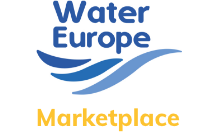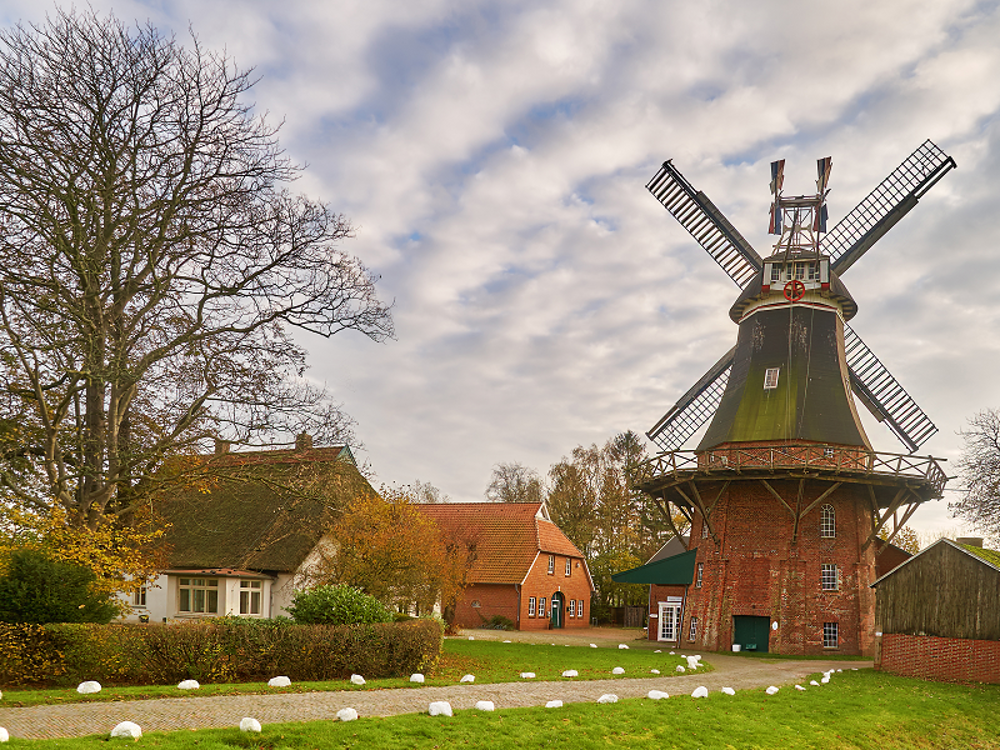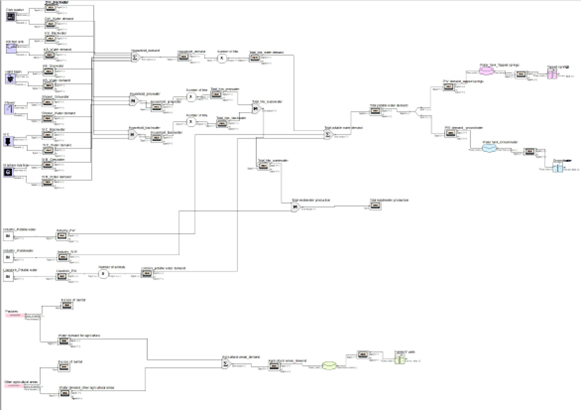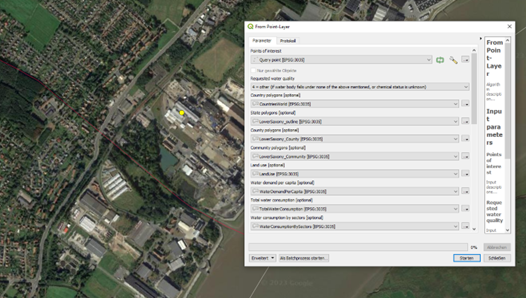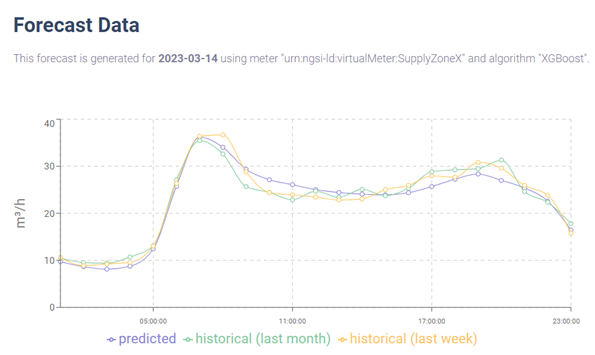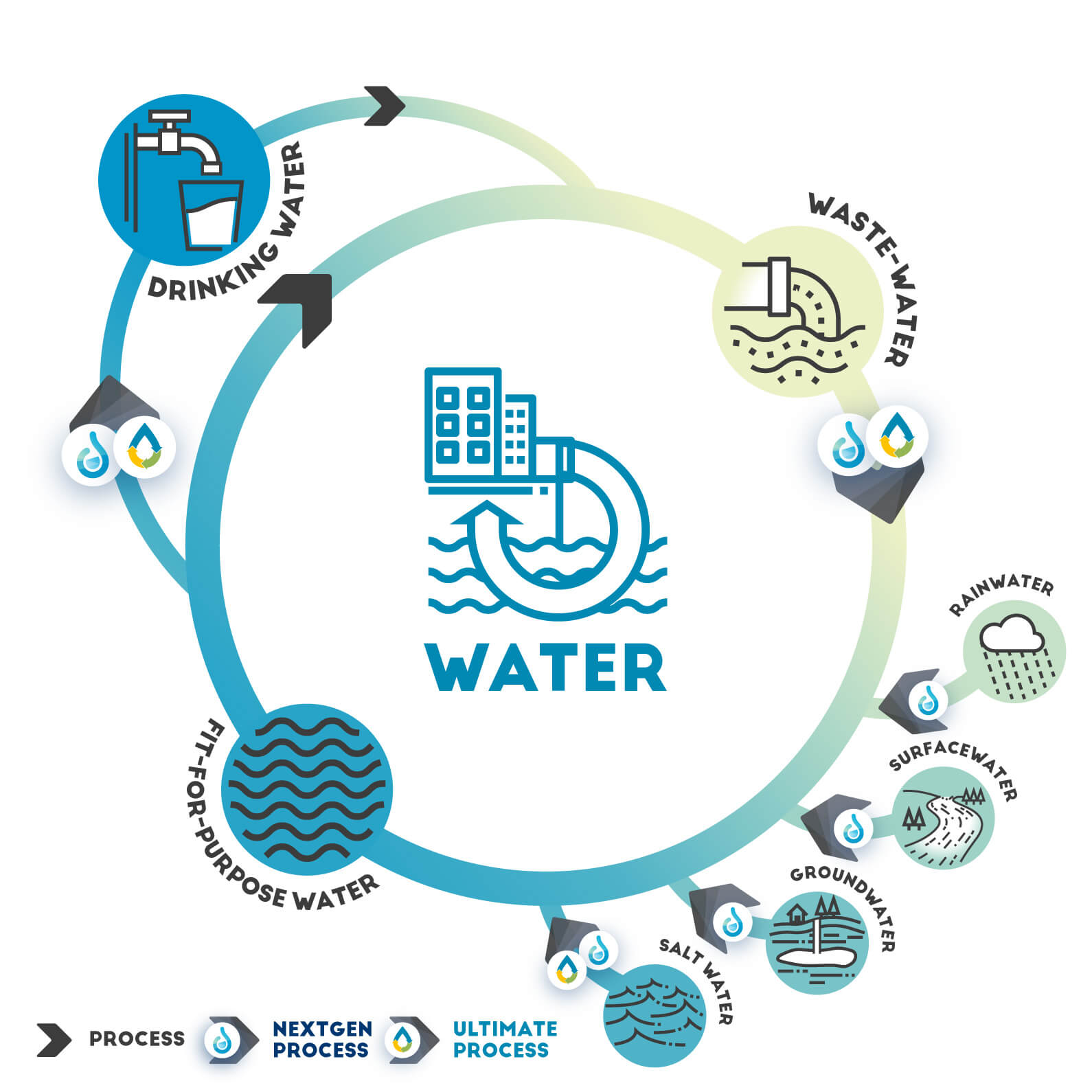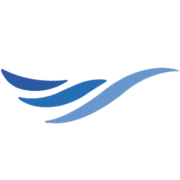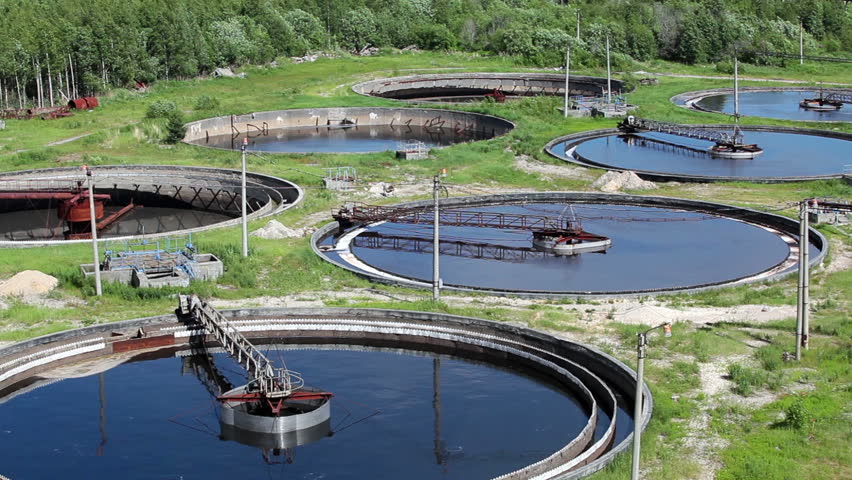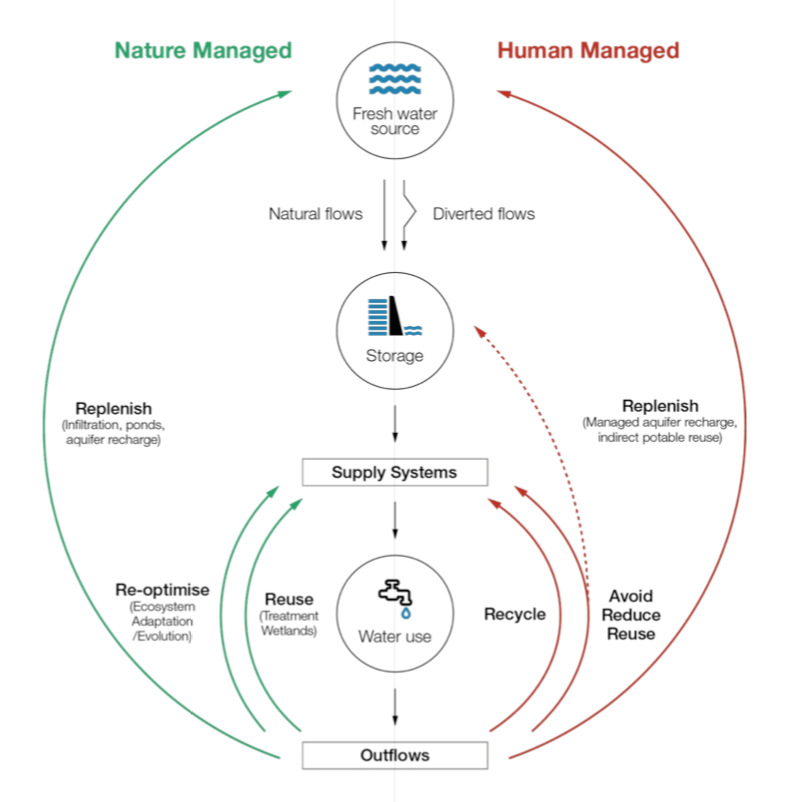Description
The OOWV (Lower Saxony, Germany) is one of the largest water suppliers in Germany with an area of 7.550 km², providing drinking water from groundwater resources to private, industrial, and agricultural customers (and treating wastewater in ~50% of the area). It is confronted with climate change, which causes hot and dry summer periods with increasing water demand in various sectors (households, industry, and agriculture) and increasing pressure on groundwater resources. Furthermore, emissions from agriculture affect the usability of water resources for drinking water purposes. The goal of OOWV is to identify unused water resources and increase the reuse of process water and treated wastewater in water-intensive sectors. For this purpose, OOWV is striving to increase the capacity of the water supply by i) identification of alternative resources, ii) intelligent protection strategies for groundwater bodies, and iii) improving the treatment of process water for reuse e.g., in the dairy industry. In the long term, integrated water resource management for the OOWV supply area is to be established using water reuse and alternative supply concepts. The methods and instruments developed in BWS as well as the technical know-how gained in the field of water reuse technologies are an important element in this.
In the case study of East Frisia, the UWOT (tool #22) is mainly used to simulate the water flows (water demand and supply points) in a test case and to investigate alternative scenarios based on different climatic and demand change conditions or with the implementation of partially decentralised technologies. The regional demand-supply matching GIS tool is used to identify i) possible consumption hotspots and areas of water shortage, ii) alternative water resources or areas with available water sources and iii) water drains from one region to another. The short-term demand forecasting tool is used to generate water demand forecasts for the next (or current) day, which can e.g., be used to identify high peak loads in certain regions that require actions by the water utility.
Applied technologies
Synergistic benefits
Pilot plant data can be embedded in the water demand-supply tool in the way that increased industrial reuse by recirculation strategies will be included as a potential future water saving potential in large scale water management and upscaled to regional water saving potentials for industrial water demands.
UWOT and the Short-term demand forecasting tool are based on a small-scale analysis, while the regional demand supply matching tool is used for large scale analyses. The data flow between the tools can therefore be described in the way that UWOT and STDFT are producing water demand scenarios that can be included in the RDSMG for future-oriented scenarios.
Requirements and conditions
For the purpose of constructing a baseline model for the testcase, data related to water demand per user (household, livestock, and industry), water supply option and meteorological conditions are estimated. Agricultural data are extracted from CORINE Land Cover (CLC) shapefiles. Based on the CLC’s categories, the main category that represents agricultural areas of different types is considered to be of type “2”. The test case region is considered to include the codes “2.1.1 Non-irrigated arable land”, “2.3.1 Pastures” and “2.4.3 Land principally occupied by agriculture, with significant areas of natural vegetation”. The category “2.1.1” was not selected to be further investigated as it refers to non-irrigated land. Other parameters regarding the agriculture, livestock and households are missing and assumptions are included in the model, based on relevant references. No special preparation in the sense of measurement campaigns or the definition of a baseline was required to use the regional demand-supply matching GIS tool in the LL context. A data package including only publicly available information is already provided with the tool. Therefore, only some data sets are specific to the LL and needed to be added and the data were assigned to GIS elements. To apply the short-term demand forecasting tool in the LL, it was necessary to first deploy smart meters that measure hourly water consumption or water flow.
Key lessons
The implementation of the UWOT tool in the test case produced useful results for water use in the different sectors. It could have multiple benefits for water management strategies in case more data becomes available regarding the different water users and sources. Additionally, it could be useful to know the policies and measures related to water management in order to further investigate possible future scenarios based on real data and not assumptions. The model can be adjusted to account for changes in any scenario parameters, (e.g., population increase, livestock changes, industry changes, climate-driven scenarios etc.).
The RDSMG tool has great potential to become a key monitoring and decision-making tool for sustainable water resources and water demand management in the region. However, its acceptance and usefulness very much depend on the input data available. For this first-time implementation the main ambition was to make the most use of publicly available information from national, regional, and local databases. In the future, highest benefits from the tool can be derived if data sets are regularly updated and enriched by new information collected from stakeholders.
The STDFT was successfully implemented in the city of Lohne. The results of the case study application prove the usefulness of the tool for predicting future load profiles of municipal water demand in the districts under investigation. Nevertheless, the accuracy smart meters in the network and the prognosis depend very much on the positioning and demographic information available in this section of the supply network. For future studies a large-scale implementation of smart meters would be desirable instead of summarized measurements of small city districts in order to enhance the prognoses´ quality.
Legislation and policy recommendations
- Climate Adaptation Strategy & Plans + Circular Economy Action Plan (EU); Water Framework Directive (WFD)
- Smart meters: Metering Point Operation and Data Communication in Intelligent Energy Networks Act; IT Security Act
- Federal Water Act (Wasserhaushaltsgesetz, WHG, in German)
- Drinking water Ordinance (Trinkwasserverordnung, TrinkwV)
- Metering Point Operation and Data Communication in Intelligent Energy Networks Act (Gesetz für den Messstellenbetrieb und die Datenkommunikation in intelligenten Energienetzen, MsbG)
- Law on the Federal Office for Information Security (German: Gesetz über das Bundesamt für Sicherheit in der Informationstechnik, BSIG)
- IT Security Act (German: IT-Sicherheitsgesetz, IT-SiG)
Applied products
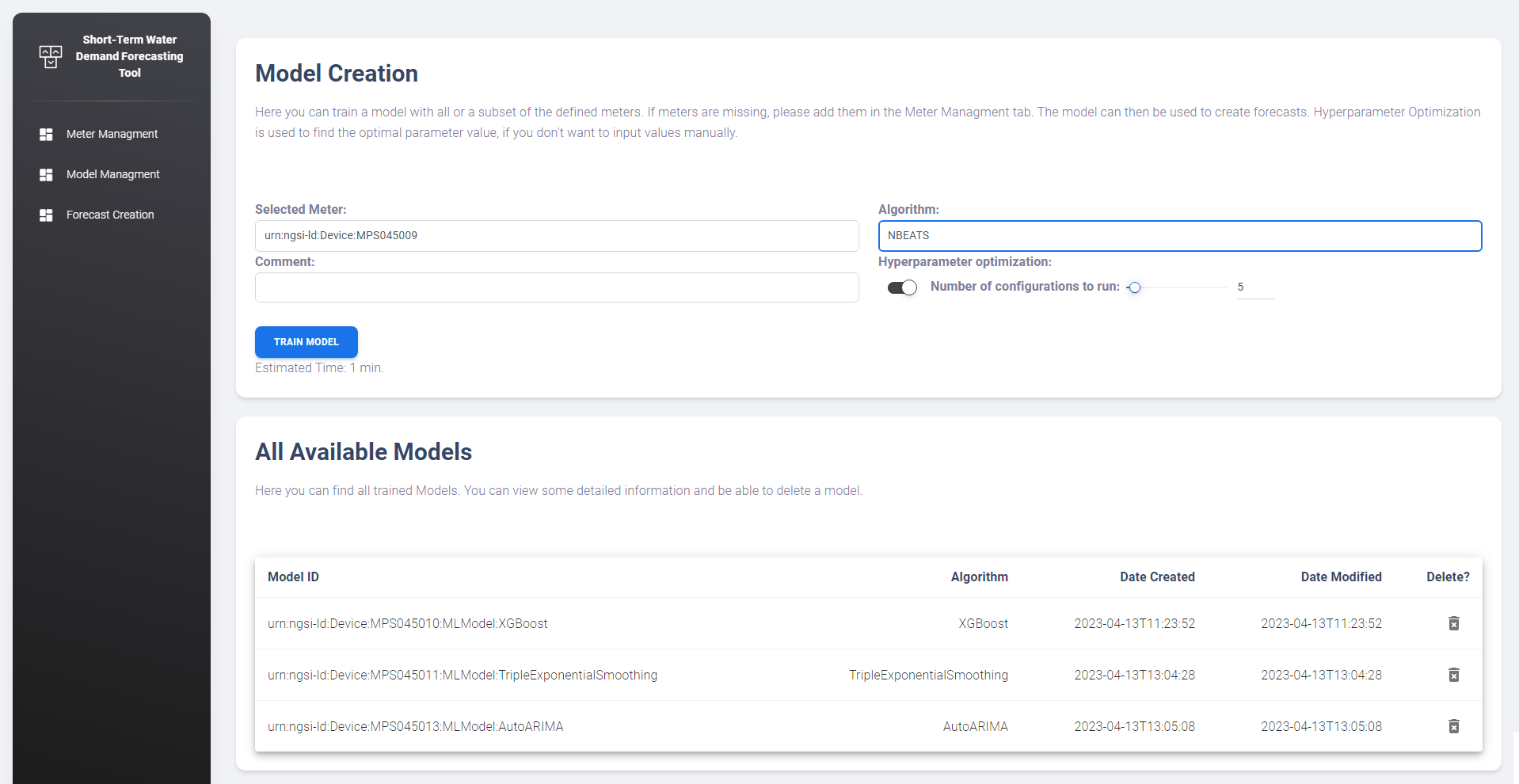
Short-term demand forecasting tool
Two main components: Backend service that allows to train models and create water demand predictions. The service is r…
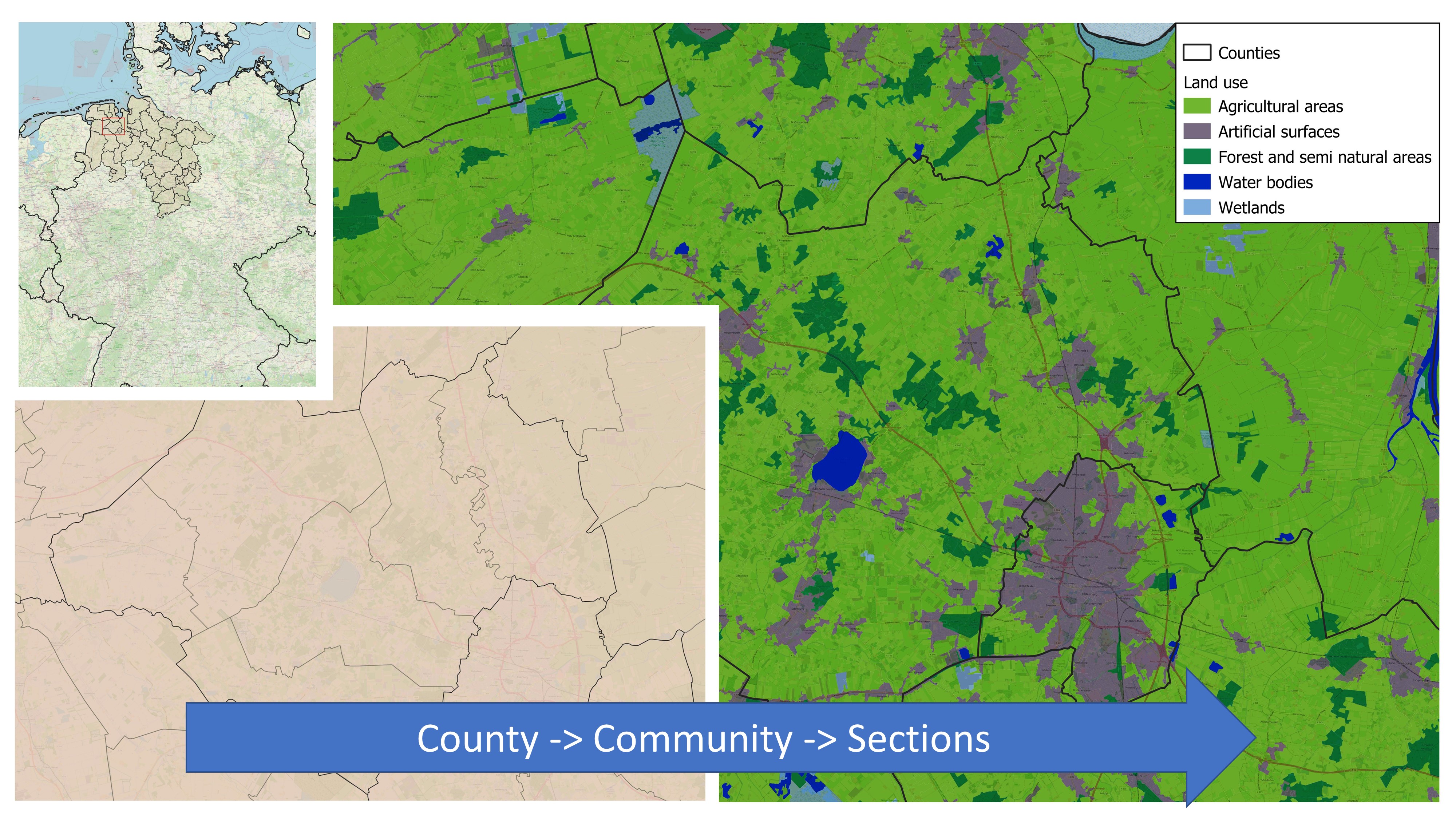
Regional demand-supply matching GIS tool
Systematic visualisation and merging of open-source data (water demand and water sources). Identification of water sour…
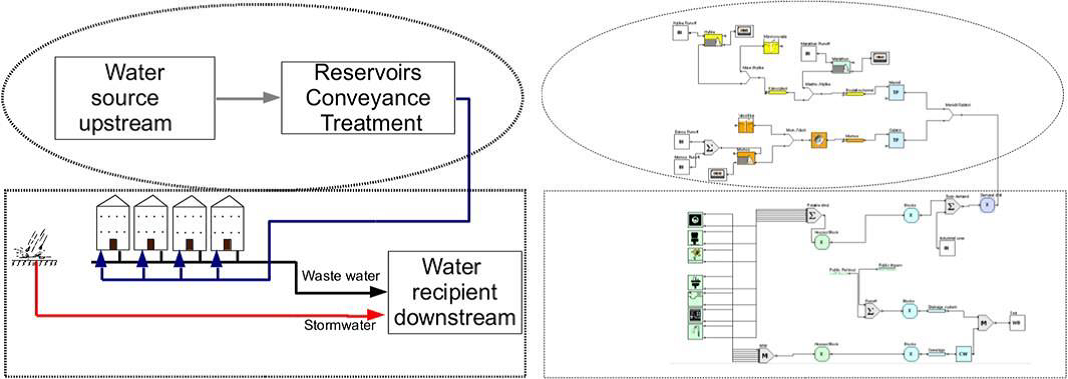
Urban Water Optioneering Tool
UWOT is a decision-support tool that allows users to compare different water management technologies (including water s…
Publications and references
Schwesig et al. (2023): Digitale Lösungen für eine wasserbewusste Gesellschaft, Energie|Wasser-Praxis, 6+7/2023, pp. 54-59. https://energie-wasser-praxis.de/wp-content/uploads/2023/06/2023_06_06_FB-Schwesig_0607_2023.pdf
